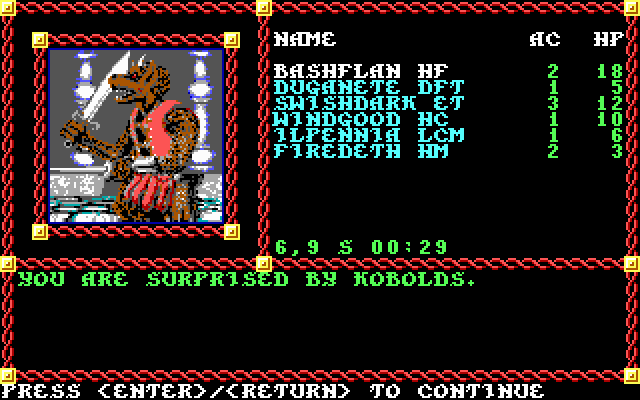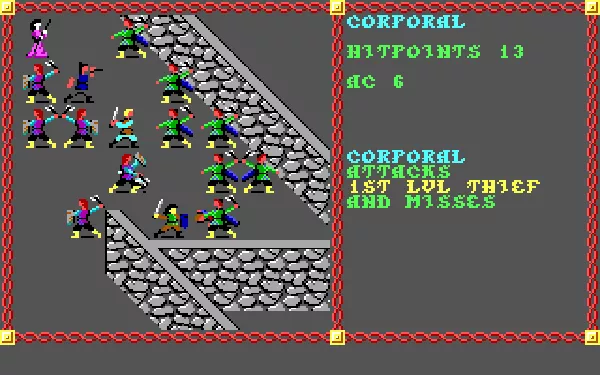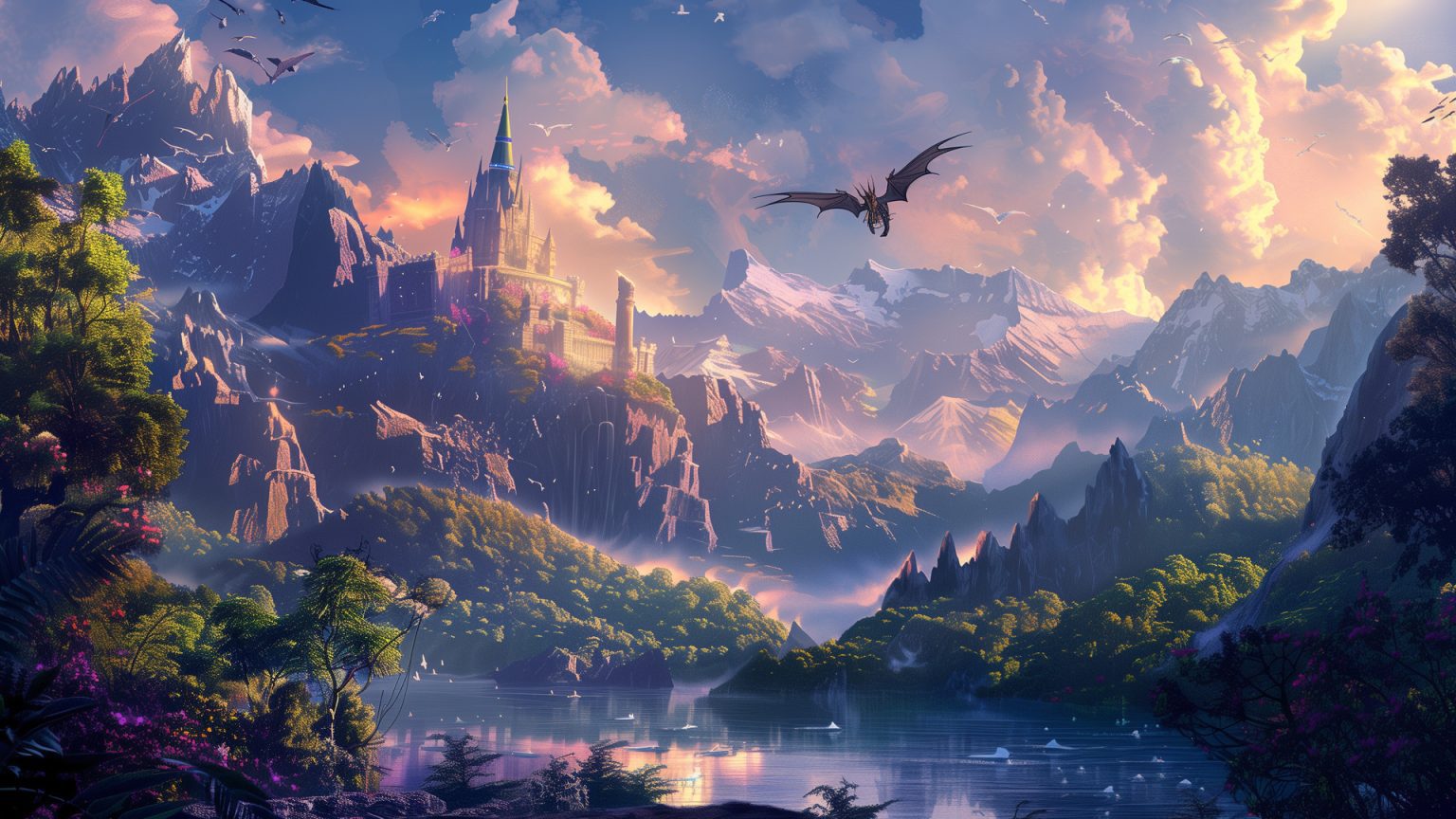Why I love Dungeons & Dragons - and my favourite high fantasy settings
| Image by Wizards of the Coast |
[15 min read]
Dungeons & Dragons
What is D&D, really?
Before there were character sheets and bookshelves full of bright tomes, there were tables filled with hand-painted toy soldiers. That was miniature wargaming - players maneuvering units across elaborate terrain, resolving skirmishes with rulers, dice, and an impartial referee. It’s a tradition that goes back to the 19th century, and likely further if you count chess. (More on wargaming another time - it's a blind spot in my tabletop gaming experience that I want to remedy.)
 |
| D&D has its roots in miniature wargaming Image courtesy of PAXsims |
Then, in the early 1970s, someone had an idea:
What if you zoomed in?
What if, instead of controlling armies, each player controlled just one character - a rogue, a wizard, a fighter - and followed them not just across the battlefield, but through caverns, cities, and ruins? What if the battles were just part of something bigger: a story?
That’s how Dungeons & Dragons began. The earliest games were about exploring deadly dungeons drawn by the referee (now called the Dungeon Master, or DM), who would describe what the players saw, ask them what they wanted to do, call for dice rolls, and narrate the consequences. It was breaking new ground in the world of gaming.
 |
| Early D&D - "Sssh, my rogue is going to sneak up on that orc and backstab it" Image from the Baltimore Sun, courtesy of 2 Warps to Neptune |
Fast forward fifty years. The rules have evolved, the adventures have expanded, and today’s version - 5th Edition - is designed to welcome new players without losing what makes the game special. A typical session might still involve dungeon crawling, but just as often you're settling a dispute in a local village, making pacts with devils, or building your own bastion to call home.
D&D is a framework for collaborative storytelling. It’s a great excuse to laugh, get creative, and spend time with people. And while its popularity has exploded (some estimates say over 85 million people are fans), it’s still, at its heart, a group of people sitting around a table being asked:
“So... what do you want to do?”
 |
| Why is D&D so popular? Take a bunch of talented voice actors playing D&D and upload to YouTube The cast of Critical Role, image courtesy of CBC |
Why I love playing D&D
Want to jump into D&D yourself?
- A Player’s Handbook (or free Basic Rules online)
- A Monster Manual (to pit your players against fiendish foes)
- A few friends (I'd recommend at least 3 players plus you as DM)
- A bit of imagination (no minis, maps, or fancy gear required - you can just describe things)
If you’re struggling to find a group or want a gentle introduction, check out StartPlaying.Games. It’s a platform where you can book sessions with professional Dungeon Masters. Think of it as “try before you buy”.
There are also plenty of Looking For Group (LFG) options online. The most active include Roll20, Discord, and Reddit.
Or you can always rope in your family. I hear kids like playing games?
 |
| D&D 5th Edition 2024 Player's Handbook cover art Image by Wizards of the Coast |
When can you bring your kids along?
Some adventures, like Curse of Strahd, lean into the spooky stuff and are better suited for teens, but there’s a huge range out there. You’ll just need to sherpa them through it, adjusting the rules and content to fit your players - and maybe skipping the part where the vampires eat the villagers.
Not so keen on the 'role-playing' bit?
Try D&D board games - or video games.
If you like the idea of tactical combat and dungeon crawling but don’t fancy doing funny accents while negotiating with goblins, there are some great alternatives. Wrath of Ashardalon is a board game built on 4th Edition D&D rules, and it does a solid job replicating the exploration and monster-fighting parts of the game. That’s the one I’ve played, but there are several others that use the same system - check out Board Game Geek for the full list.
D&D’s fingerprints are all over modern video games. If you've ever built a character, levelled them up, picked between cool new abilities, and watched their story unfold, you've probably played something inspired by D&D.
That said, as of 2025, there aren’t many modern official D&D video games I’d personally recommend - except one: Baldur’s Gate 3. It’s not only a faithful translation of the D&D 5th Edition ruleset, it’s a masterpiece of character-driven storytelling in its own right. You can find it on your platform of choice, and if you enjoy thoughtful, branching narratives with turn-based tactics, it’s well worth your time.
 |
| The masterpiece that is Baldur's Gate 3 - another key driver of D&D's popularity Image by Larian Studios |
If you’re feeling nostalgic (or just curious about the history), you can dig into the Gold Box classics - turn-based role-playing games based on 2nd Edition D&D. They’re available on Good Old Games for PC. Just be warned: the graphics are... of their time, and the rules are archaic and punishing.
Want to nerd out more?
Here are a few ways to dive deeper into the world of D&D:
Watch
Critical Role is the biggest name in live-play D&D. Their campaigns on YouTube have become a cultural phenomenon - and even got turned into an animated series, The Legend of Vox Machina. If you want to see what D&D can look like when you mix voice actors, production value, and a rabid fanbase, this is where to start.
For a deeper dive into the game’s history, check out 50 Years of D&D Gen Con - featuring interviews with the people who made the game what it is.
Also worth watching: Celebrating 50 Years of D&D, a live-play tribute that runs games of every edition. Yes, even 4th.
Listen
When We Were Wizards is a podcast that tells the story of D&D’s early years. It’s well produced and exposes real drama in the hobby.
Read
The Making of Original Dungeons & Dragons is a fascinating look at how the game evolved from wargaming in 1970s mid-west USA.
So You Want to Be a Game Master is a handy reference if you’re thinking of running games yourself. Practical, accessible, and a good place to start.
What's next?
Forgotten Realms
| The version of Forgotten Realms I grew up with - 2nd Edition D&D Image by TSR, now Wizards of the Coast |
What are the Forgotten Realms?
Not the oldest, but almost certainly the largest and most-played official D&D setting, Forgotten Realms is a sprawling medieval fantasy playground - with a generous dose of magic thrown in. Empires rise and fall, leaving behind ruins full of ancient artifacts. Heroes and monsters clash with world-shaping powers. Mortals ascend to godhood, gods fall back to earth, and the land itself bears the scars.
These are the Forgotten Realms.
I've spent the majority of my D&D career playing in the heart of the Realms, Faerûn, a continent clearly inspired by Western European history. Want knights and chivalry with a hint of Arthurian myth? Try Cormyr. Feel like reenacting the age of mercantile power and naval exploration? Set course for Amn. And according to the internet, even my adopted home - Switzerland - has its analogue in The Dalelands, a loose alliance of rural communities caught between larger powers. Hop Suisse!
To me, nostalgia aside, the Forgotten Realms is the quintessential high fantasy experience. They give you a huge world to adventure in, full of mystery and magic - with just enough real-world touchstones to make it feel familiar, and just enough chaos to make it D&D.
 | |
You might want to click on this map to enlarge it - did I mention that Faerûn was huge?
|
Where do you start?
Watch
- Start with a movie night: Dungeons & Dragons: Honour Among Thieves is a fun, fast-paced romp that captures the chaotic teamwork of a D&D party. Set in the Sword Coast and the city of Neverwinter, it’s a perfect way to get a feel for the Forgotten Realms vibe - especially since many official adventures take place in this region.
Read
- The The Sword Coast Adventurer's Guide is the official 5e sourcebook for the Realms. It focuses on just one region (the Sword Coast), but it’s a solid entry point.
- If you can hold out, there are two new Realms sourcebooks coming later in 2025.
Ready to run a game?
For adventures in the Forgotten Relams, you’re spoiled for choice - Faerûn has been the default setting for 5e since 2014, and there are over a dozen official adventures. Below are a few I’ve played and can recommend.
Run
-
Dragon of Icespire Peak – A great intro adventure: protect frontier towns from a roaming white dragon in a sandbox-style campaign. I remixed this with the classic Lost Mines of Phandelver in my Frontier Forays campaign.
-
Phandelver and Below: The Shattered Obelisk – Expands on the Lost Mines and adds a darker twist, filled with cosmic horror beneath familiar ground. This one's heavy on dungeon-crawling, so be warned.
-
Tyranny of Dragons – Infiltrate the Cult of the Dragon and stop them from bringing the dragon god Tiamat into the world. Ditch the plate armour and go in stealthily for this one!
-
Rime of the Frostmaiden – Survive the frozen wilds of Icewind Dale while uncovering ancient, icy secrets. If you like your exploration with a touch of horror, strap on your snow boots.
 | |
| Covers by Wizards of the Coast, image courtesy of Game Night Blog |
Can't find time to play with a group?
Play
- Try revisiting the video games that paved the way for Baldur’s Gate 3. The original Baldur’s Gate and Baldur’s Gate II are old-school classics known for their storytelling. Check them out on Good Old Games.
Read
- Curl up with a Forgotten Realms novel - explore the chaos of the setting-defining event known as the Time of Troubles in the Avatar Series.
- Or follow iconic elven ranger Drizzt Do’Urden and his companions in the Legend of Drizzt series. They're just the tip of the iceberg, but they’re a great way to get lost in the Realms when you can't roll dice.
Dragonlance
| Image by the Wizards of the Coast |
Like your fantasy, epic?
Its themes are classic high fantasy: good vs. evil, heroic quests, dragonriders, and the looming threat of a dark queen of dragons. Bold, dramatic and simple enough for those not looking to navigate nuanced moral quandries.
One of the setting’s signature elements? Draconians - twisted creations born from the corrupted eggs of good dragons. Each type has its own powers and death effects, and they’ve become iconic to the Dragonlance world.
Run
- Dragonlance: Shadow of the Dragon Queen is the official 5e adventure. It’s light on lore but heavy on action.
Play
- Warriors of Krynn, a standalone strategy board game game that pairs with Shadow of the Dragon Queen, mixing large-scale battles with playable heroes. Read my impression of the game here.
- Champions of Krynn trilogy of Gold Box computer RPGs from the 2nd Edition era let you walk the same paths I did as a kid - the first entry is the only video game I have ever completed more than twice!
Read
- Dragons of Autumn Twilight kicks off the original novel trilogy and follows the core Dragonlance heroes through a classic tale of courage in the face of adversity.
Planescape
 |
| The enigmatic Lady of Pain patrolling the streets of her City of Doors, Sigil Image by Wizards of the Coast |
Want a cosmic twist?
Run
- Planescape: Adventures in the Multiverse box set for 5e. It's maybe a little light on setting, but what's there is great - and my kids love flipping through the art!
- Vecna: Eve of Ruin isn’t technically a Planescape adventure, but it captures the multiversal vibe with Sigil as your home base. Yes, it’s a bit “on rails,” but the plane-hopping spirit is there.
Play
- Planescape: Torment is one of the most revered narrative computer RPGs ever made. I’ve never finished it, but its writing and themes are legendary - more nuanced and mature than the bright Planescape of today though.
What's next?
So there you have it - my love letter to Dungeons & Dragons and some of my favourite high fantasy settings. Whether you’re new to the hobby and thinking about booking your first session, or a grizzled DM looking for your next inspiration, I hope something here sparked your imagination.
Got a favourite high fantasy world of your own? Share it in the comments - I’d love to hear about it. And don’t forget to subscribe to the newsletter so you don’t miss the next article in this series.
Next: we shift gears into low fantasy, starting with the setting that modern fantasy owes everything to - Middle-earth.
Yours in the fantastical,
Dashmeister



Comments
Post a Comment